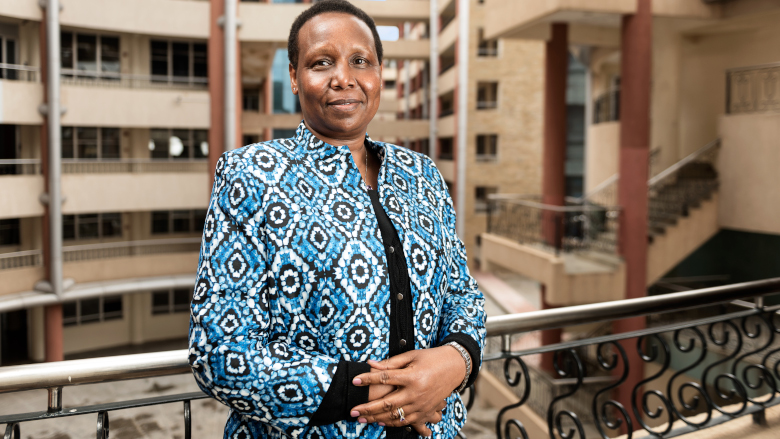NAIROBI, July 14th, 2020 – When Eng. Esther Ruto was young, there were no women aspiring to complete degrees in Science, Technology, Engineering and Mathematics (STEM) in her rural hometown of Kericho, Kenya.
The absence of African women in sciences, noted by her teacher, motivated her.
“Why is that? So I found myself trying to find out,” said Ruto, who became the first woman in Kericho to study electrical engineering. “I am the type of person who takes challenges.”
Now the General Manager in charge of the Power Distribution and Regional Coordination Directorate at Kenya’s Rural Electrification and Renewable Energy Corporation, Ruto is still one of very few women in the field. Her experience in school reflects what has been dubbed a “leaky pipeline.” Fewer girls pursue degrees based in STEM after high school, and even fewer seek STEM-related careers. In the cases where girls do choose a STEM-related career, they are often held back from advancement to senior position by pressures in the home or the workplace.
As a result, women are substantially under-represented in the energy sector internationally, as well as in most utilities and the infrastructure sector.
With funding from the UK Department for International Development (DFID)/Energy and Economic Growth Program (EEG), the World Bank’s Energy Sector Management Assistance Program (ESMAP) is leading an in-depth study of employment issues in the energy sector. Led by the Africa Gender and Energy Program, this research is looking at the career trajectories of women in energy utilities across Ethiopia, Kenya and Zambia, and noting their challenges.
Kenya is turning the numbers around. The Kenyan government adopted a two-thirds gender principle in the 2010 Constitution. It requires the state to take steps to ensure any elected or appointed body should have no more than two-thirds of its members from one gender.
Employment policies following the legal push for better representation of women in the workforce are making a difference, said Sarah Wepukhulu, Connectivity Manager for the Kenya Power and Lighting Company (KPLC), a listed electricity distribution company with a majority government shareholding.
In aiming to meet the national employment goals, a focus is being placed on recruiting female applicants from universities. However, the proportion of women in technical roles remains around 13%, as opposed to 22% across the company as a whole. Raising those levels has meant looking further back for “leaks” in the pipeline.
“We realized that waiting until university level to recruit girls is too late,” Wepukhulu said. “So we are now developing programs to engage girls at the high school level.”


